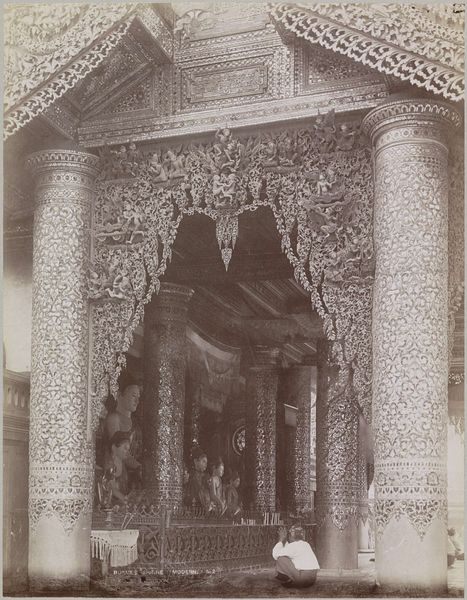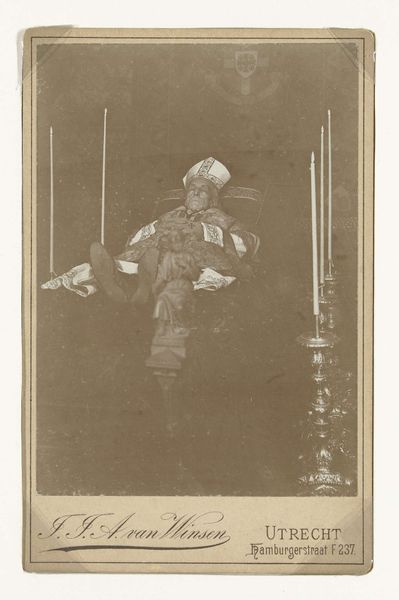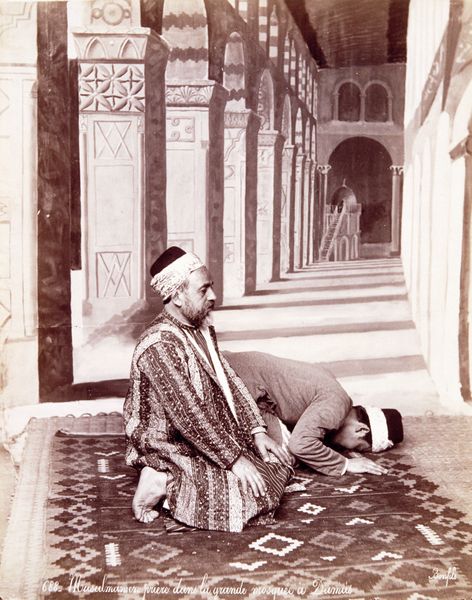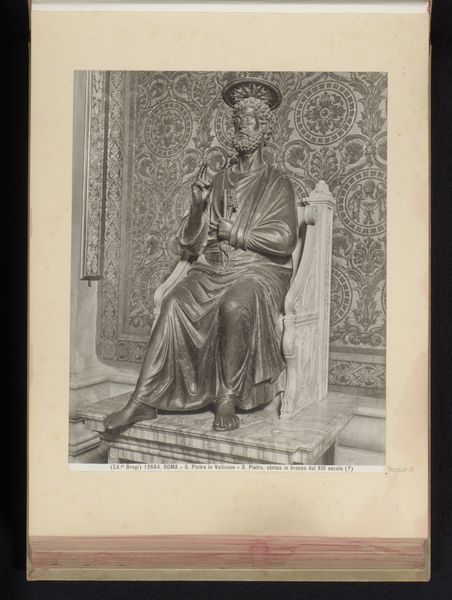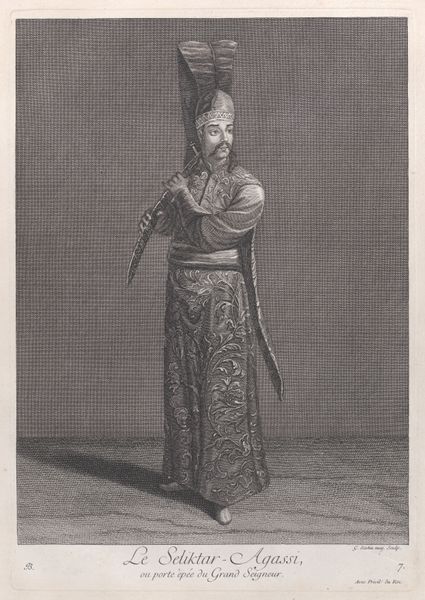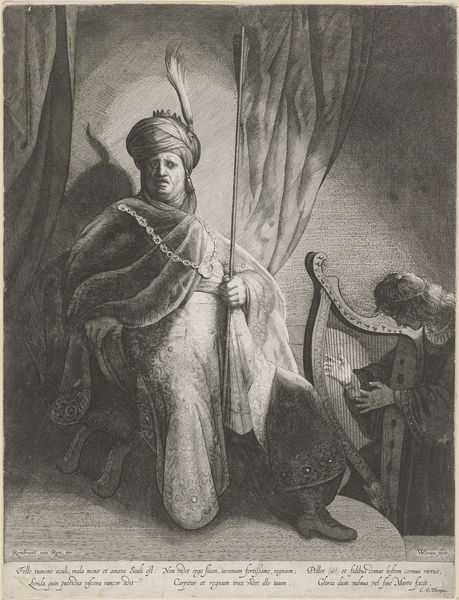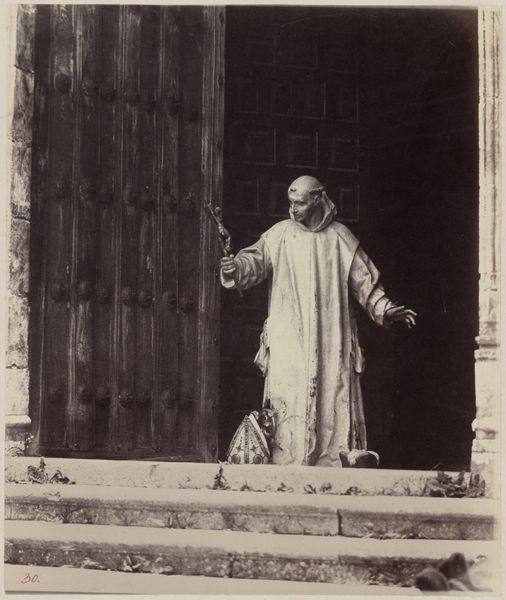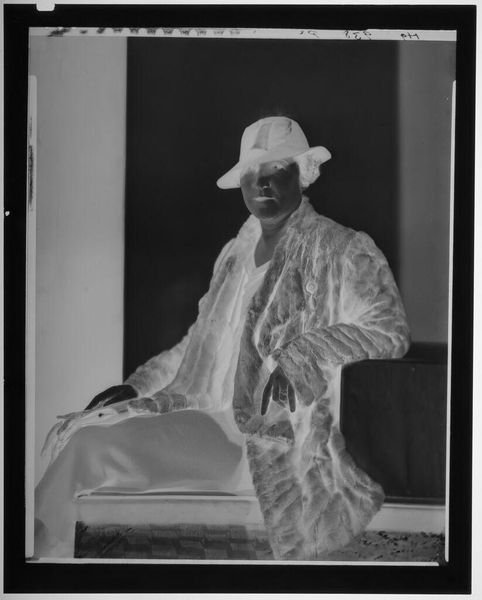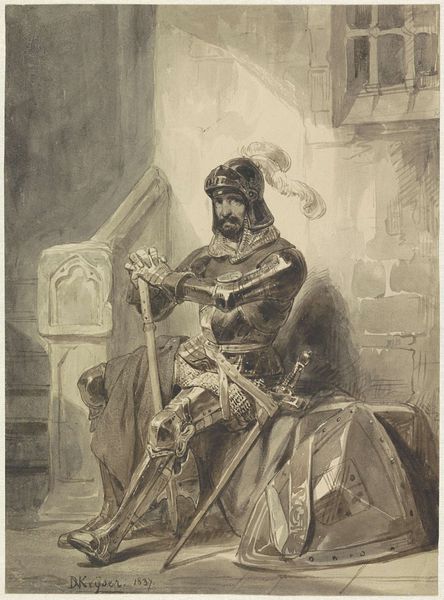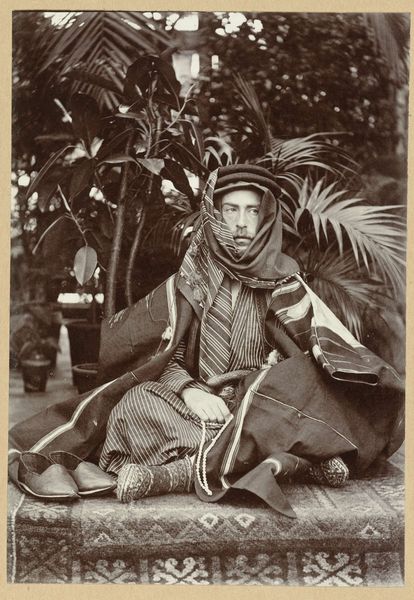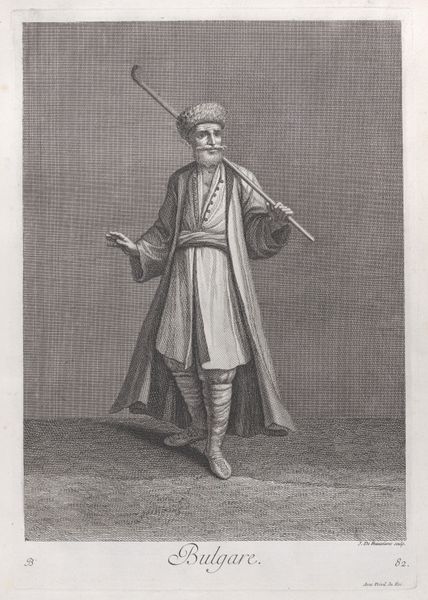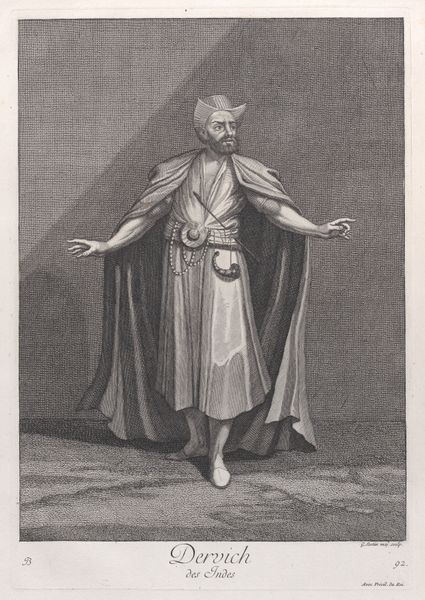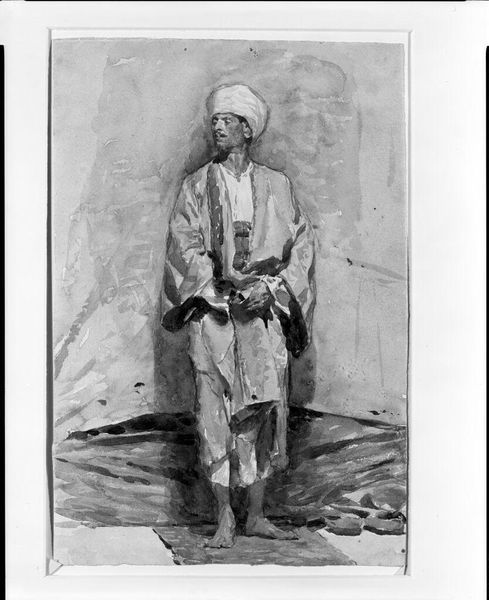
print, photography, sculpture
#
portrait
#
still-life-photography
# print
#
sculpture
#
photography
#
sculpture
#
mexican-muralism
Dimensions: image: 25.9 x 20 cm (10 3/16 x 7 7/8 in.) sheet: 40.3 x 31.4 cm (15 7/8 x 12 3/8 in.)
Copyright: National Gallery of Art: CC0 1.0
Editor: This photograph by Paul Strand, titled "Cristo, Tlacochoaya, Oaxaca," was possibly taken between 1933 and 1967. It shows a sculpture of Christ housed in what looks like a small, ornate alcove. The textures and details are incredible. What strikes you about this piece? Curator: The formal elements are indeed quite compelling. Consider the sharp contrasts in light and shadow, particularly how they define the folds of the drapery and the contours of the figure. Strand's precise manipulation of tonality directs our gaze, guiding us through the composition. Editor: I see that, the lighting definitely makes the figure of Christ the focus, but also accentuates the details of the alcove around it. Curator: Precisely. The rectangular structure of the alcove containing the statue provides a visual framework, and the statue appears constrained within its architectural border. The figure's position—hunched and slightly off-center—adds to a sense of contained energy. What meaning might you find in such structural tension? Editor: Maybe the confinement alludes to the restrictions put upon Christ. He doesn't have room to sit comfortably; the viewer also doesn’t have any point to freely rest their eyes, except Christ. Curator: Indeed, an interpretation worth noting. It highlights how Strand uses formal choices to communicate complex ideas about faith, confinement, and perhaps, the cultural landscape of Mexico itself. The way the sculpture fills the space could even symbolize the pervasiveness of religion within that society. Do you observe any semiotic codes worth discussing? Editor: The crown hints at royalty or divinity, although, perhaps paradoxically, in this image, royalty looks uncomfortable. Strand masterfully uses composition to suggest discomfort and religious significance simultaneously. I’ll be considering that moving forward. Curator: An astute observation. Paying attention to details such as the crown or framing allows one to interpret the artwork as a statement about cultural values and their intrinsic visual language.
Comments
No comments
Be the first to comment and join the conversation on the ultimate creative platform.
